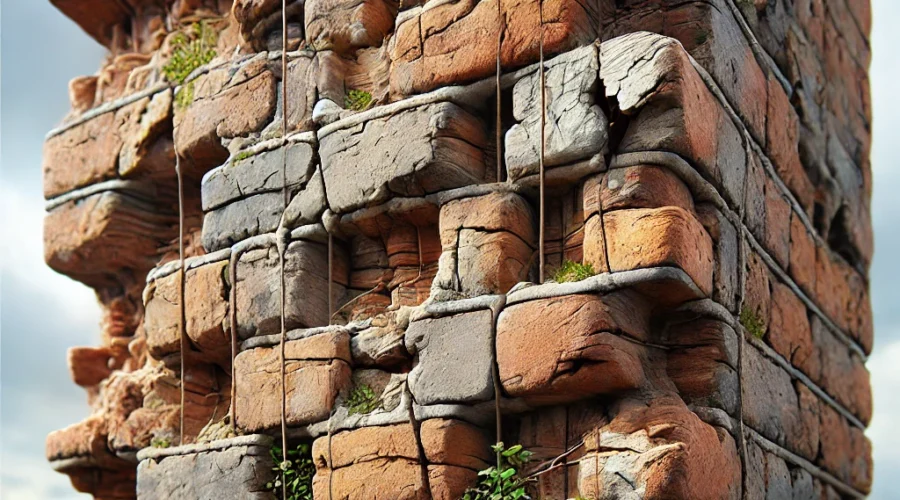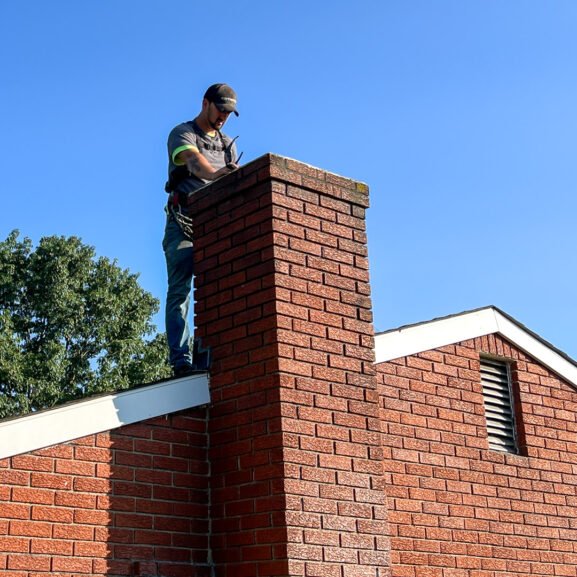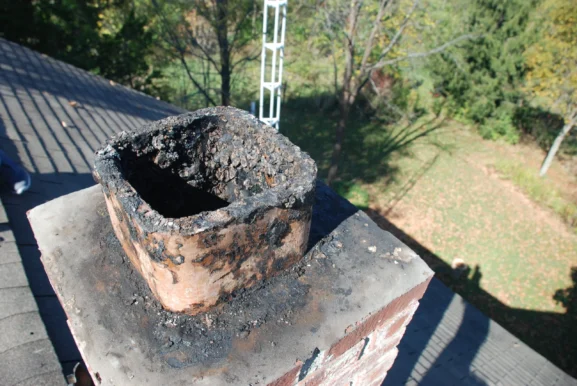Deteriorating Chimney Mortar Joints Due to Age: Causes, Risks, and Repair Tips
As our homes age, certain features demand more attention, and chimneys are no exception. Over time, the mortar joints holding these structures together can deteriorate, leading to significant issues if left unchecked. It’s easy to overlook these signs of wear and tear, but understanding the impact of aging on chimney mortar joints is crucial for maintaining the safety and integrity of our homes.
In this text, we’ll explore why chimney mortar joints degrade and what warning signs to watch for. We’ll also discuss the potential risks of ignoring these issues and the steps we can take to address them. By staying informed and proactive, we can ensure our chimneys remain safe and functional, providing peace of mind for years to come.
Chimney Mortar Joints Explained: A Homeowner’s Guide
Chimney mortar joints play a crucial role in maintaining the structural integrity of your chimney. These masonry joints connect bricks, keeping everything tight and sturdy. With aging chimneys, these joints can start to crumble or crack, leading to mortar joint deterioration. The weather adds to this wear and tear, with freeze-thaw cycles and moisture infiltration speeding up the process.
Why Mortar Joints Matter:
- Structural Integrity: Joints hold the chimney together, ensuring stability.
- Moisture Barrier: They prevent water from seeping inside, which can lead to damage.
- Aesthetic Appeal: Well-maintained joints keep your home looking its best. A chimney with damaged joints is like a smile with missing teeth—not charming.
Ignoring these signs could compromise home safety. Regular chimney inspection is vital to catch issues early. An area’s seasonal maintenance can help spot problems related to weathering effects before they get worse.
We recommend reaching out to chimney professionals for proper maintenance. DIY repairs aren’t advisable as they can worsen the situation. By getting regular inspections, you not only prolong the chimney’s life but also ensure safety.
Causes of Deterioration
Chimney mortar joints face various challenges as they age. Weather conditions, materials, and maintenance all play a role in deterioration. Understanding these can help maintain a chimney’s structural integrity.
Weather Exposure
Weather significantly impacts mortar joint deterioration. Severe winters subject chimneys to freeze-thaw cycles, causing mortar to expand and contract, which leads to cracking. Rain and moisture infiltration, notorious love birds for masonry, seep into the joints, promoting further decay and weakening. Weathering effects due to severe storms may also erode chimney structures. Regular chimney inspections can reduce damage caused by unpredictable weather. For delightful imagery, picture this: weather, the unruly toddler, likes to play rough with mortar joints.
Aging Materials
Aging chimneys often suffer from worn materials. Over time, mortar loses binding strength, much like a retired weightlifter. As the materials degrade, masonry joints become brittle, leading to cracking and eventually crumbling mortar. Old bricks may shift, creating visible gaps in the mortar. Chimney maintenance becomes essential once these signs of deterioration appear. To prevent further damage, reach out to the nearest chimney service contractor by using our search form.
Lack of Maintenance
Neglecting regular maintenance accelerates chimney deterioration. Without preventative maintenance, minor issues can escalate into costly repairs. Regular chimney inspections by professionals can identify early signs like cracking or displaced bricks. Intervals for seasonal maintenance can vary but are vital in safeguarding against structural issues. Remember, we don’t advise on DIYs; some projects are best left untouched, like haircuts and chimneys. For home safety, consult professionals who can carry out effective repair techniques.
Signs of Deteriorating Mortar Joints
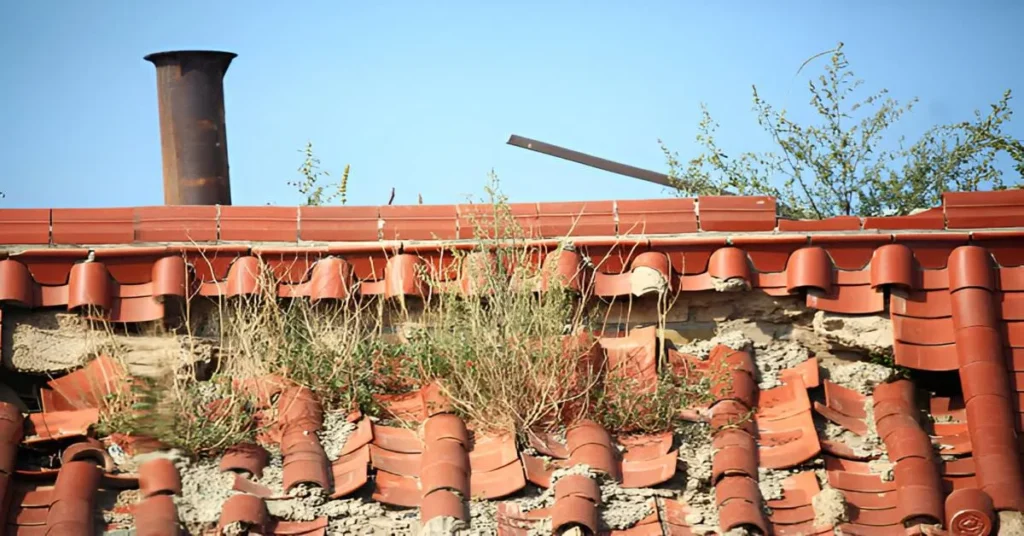
Identifying deteriorating mortar joints helps maintain home safety. Look out for these key signs to protect aging chimneys from further damage.
Cracking and Chipping
Cracking and chipping in mortar joints often point to serious concerns. When masonry joints crack or chip, structural integrity suffers. Over time, weathering effects like freeze-thaw cycles worsen these issues. Crumbling mortar makes chimneys resemble jagged smiles, often losing their original charm. Prompt chimney inspection can prevent larger problems later on. We advise contacting chimney professionals instead of trying DIY repairs.
Water Leakage
Water leakage in chimneys signals mortar joint deterioration. Moisture infiltration harms masonry preservation efforts. Damp spots or mold near fireplaces may indicate this problem. Harsh weather demands seasonal maintenance to avoid these issues. Inspections reveal hidden leaks while offering repair techniques for persistent dampness. For your home’s longevity, address water leakage immediately. Refer to authorities like the National Fire Protection Association for fire safety guidance or explore Chimney Safety Institute of America for further insights into chimney maintenance.
Impact on Chimney Structure
Aging chimneys face challenges from weathering effects and mortar joint deterioration. By understanding these impacts, homeowners can prioritize chimney maintenance and avoid costly repairs.
Structural Integrity
Deteriorating mortar joints weaken the masonry structure of chimneys. This jeopardizes the stability and makes the chimney vulnerable to external forces like wind and moisture infiltration. Over time, crumbling mortar may cause bricks to loosen, making the chimney look like it’s trying to do a dance it wasn’t rehearsing for.
Building longevity relies on strong masonry joints. Regular chimney inspection helps identify issues, ensuring the health of both the chimney and the building. Through preventative maintenance, we can reinforce structural integrity and avoid unplanned chimney repairs.
Safety Concerns
Compromised chimneys pose significant risks, including falling debris and the potential for fires. Mortar decay may lead to gaps where dangerous fumes can enter the home. The last thing we want is our chimney turning into an unwelcome guest at your family gatherings.
Safety concerns heighten with freeze-thaw cycles in winter. The cycle widens existing cracks, demanding prompt attention. Masonry preservation through regular seasonal maintenance mitigates these dangers.
Repair and Restoration Options
Understanding and fixing deteriorating chimney mortar joints significantly enhances home safety and longevity. We’re no strangers to the challenges aging chimneys present. Between crumbling mortar and unpredictable weather, regular maintenance becomes essential.
Repointing Techniques
Repointing strengthens weakened masonry joints through the careful removal of damaged mortar and its replacement with new material. By preserving structural integrity, repointing safeguards against moisture infiltration and potential chimney damage. During repair, we ensure that each joint is filled to the right depth, using techniques that enhance building longevity.
Professionals use specialized tools to remove old mortar without damaging bricks. By addressing signs of deterioration like chipping and cracking, we protect homes from further weathering effects. Seeking our professional services beats attempting a DIY fix—after all, we’re the experts, not wannabes.
Using Durable Materials
Durable materials play a key role in effective chimney repair. We use modern, long-lasting compounds that resist freeze-thaw cycles and harsh weather conditions common. These materials minimize the impact of moisture infiltration, thereby enhancing the chimney’s structural integrity.
Choosing the right material respects the masonry’s original appearance while enhancing performance. Selecting quality over convenience helps resolve crumbling mortar issues for the long term. Contact us for guidance on suitable materials and enjoy peace of mind with professional solutions.
Prevention and Maintenance Tips
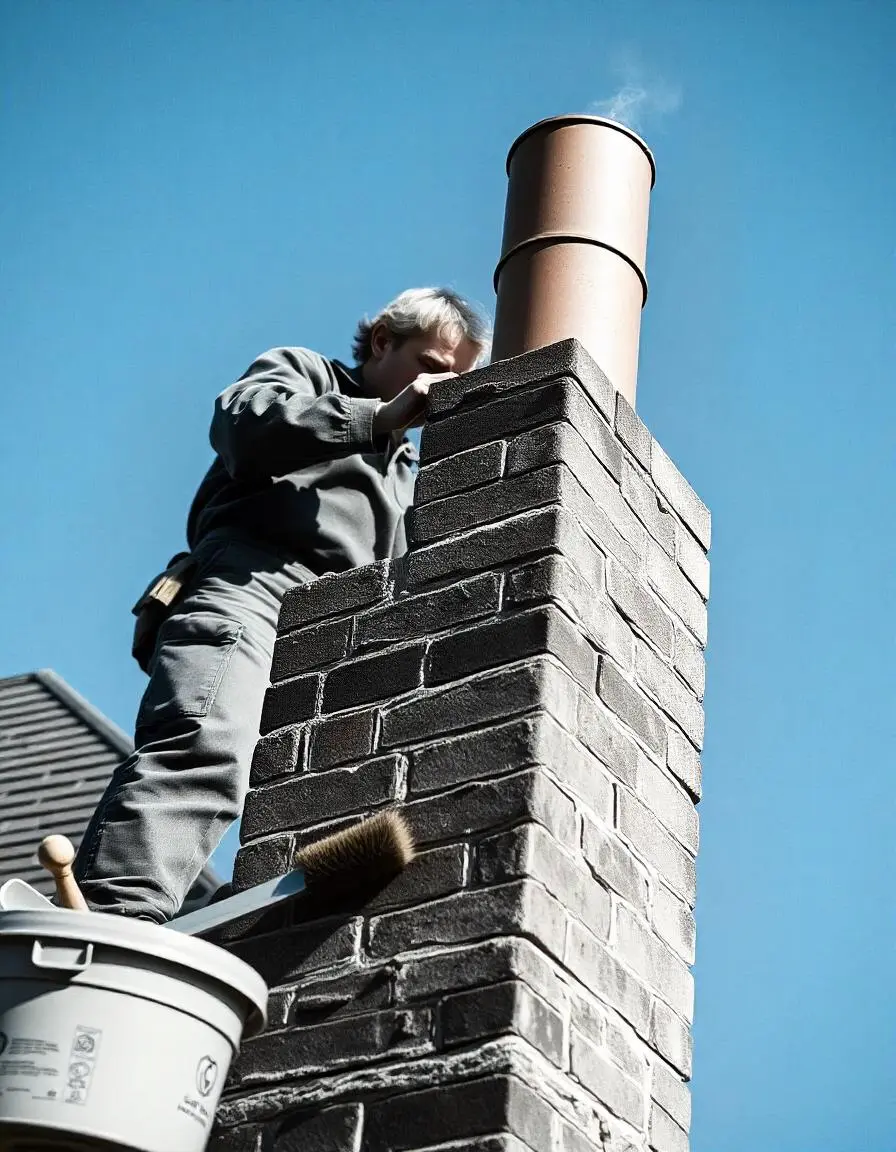
Chimney maintenance is crucial to counter mortar joint deterioration as chimneys age. Let’s jump into some easy tips to keep that chimney standing tall and strong.
Regular Inspections
Regular inspections are a must to catch issues before they escalate. Weathering effects like freeze-thaw cycles and moisture infiltration make this especially important. During inspections, chimney professionals can spot signs of deterioration, such as crumbling mortar and gaps.
- Check for visible cracks and wear in masonry joints
- Look for water stains or mold, indicating moisture issues
- Review chimney exterior for displaced bricks
By staying on top of inspections, we maintain our home’s structural integrity and masonry preservation.
Protective Measures
Taking protective measures can prevent further chimney repair needs. Implementing some straightforward strategies may help avoid costly restoration methods later.
- Install chimney caps to prevent rain and animal entry
- Seal masonry with breathable, water-repellent solutions
- Schedule seasonal maintenance, especially before harsh winters
These actions can reduce weathering effects, maintaining the beauty and safety of our aging chimneys.
Preserve the Heart of Your Chimney with Proactive Care
Taking proactive steps to maintain our chimney mortar joints is essential for both safety and aesthetics. By staying vigilant and addressing any signs of deterioration promptly, we can prevent minor issues from escalating into major repairs. Regular inspections and professional consultations are key in safeguarding our homes against the harsh elements that contribute to mortar joint decay.
Investing in professional services and high-quality materials ensures that our chimneys remain robust and functional for years to come. Let’s prioritize these maintenance practices to enjoy the charm and safety of a well-preserved chimney.
Frequently Asked Questions
Why is maintaining chimney mortar joints important?
Maintaining chimney mortar joints is crucial because they connect the bricks, ensuring the structural integrity and stability of the chimney. As these joints deteriorate, especially in harsh weather conditions, the chimney can lose its structural strength, posing risks to home safety. Regular maintenance prevents small issues from escalating into major problems and maintains both the aesthetic appeal and functional safety of the chimney.
What causes mortar joint deterioration?
Mortar joint deterioration is primarily caused by weather exposure, aging materials, and lack of maintenance. Harsh winters, moisture infiltration, and freeze-thaw cycles can lead to cracks and decay. Over time, the materials can lose their binding strength, resulting in brittle joints and visible gaps. Neglecting regular maintenance can exacerbate these issues, transforming minor problems into costly repairs.
What are the warning signs of deteriorating mortar joints?
Warning signs of deteriorating mortar joints include visible cracks, crumbling mortar, displaced bricks, and water leakage. Damp spots or mold near fireplaces can indicate serious structural concerns. Recognizing these signs early is essential to prevent larger safety issues and expensive repairs associated with chimney deterioration.
How can neglected mortar joints affect home safety?
Neglected mortar joints can compromise home safety by weakening the chimney’s structural integrity, making it susceptible to external forces like wind and moisture. This can lead to falling debris and dangerous fumes entering the home. Regular inspections and maintenance are vital to reinforce structural integrity and prevent such risks.
What are the recommended repair options for chimney mortar joints?
For repairing chimney mortar joints, professional services like repointing are recommended. This involves removing damaged mortar and replacing it with durable materials that resist harsh weather, preserving the chimney’s structural integrity. Quality materials and expert guidance ensure long-term solutions, enhancing home safety and chimney longevity.
Can DIY repairs be effective for chimney mortar joints?
DIY repairs for chimney mortar joints are generally not advised, as they may worsen the situation if not done correctly. Professional chimney experts have the experience and knowledge to conduct thorough inspections and ensure effective and safe repairs, minimizing potential risks and ensuring compliance with safety standards.
What are the key preventive measures for maintaining chimney health?
Key preventive measures include regular inspections for visible cracks and water stains, installing chimney caps, and sealing masonry with water-repellent solutions. Scheduling seasonal maintenance is also crucial to protect against deterioration, particularly in regions with challenging weather conditions. These strategies help maintain the chimney’s beauty and safety while avoiding costly repairs.
Who should homeowners consult for chimney maintenance and safety guidance?
Homeowners should consult chimney professionals for maintenance and repairs. Additionally, resources like the Chimney Safety Institute of America and the National Fire Protection Association provide valuable guidance on chimney maintenance and fire safety. These professionals and organizations ensure that chimneys are maintained correctly and adhere to safety standards.
